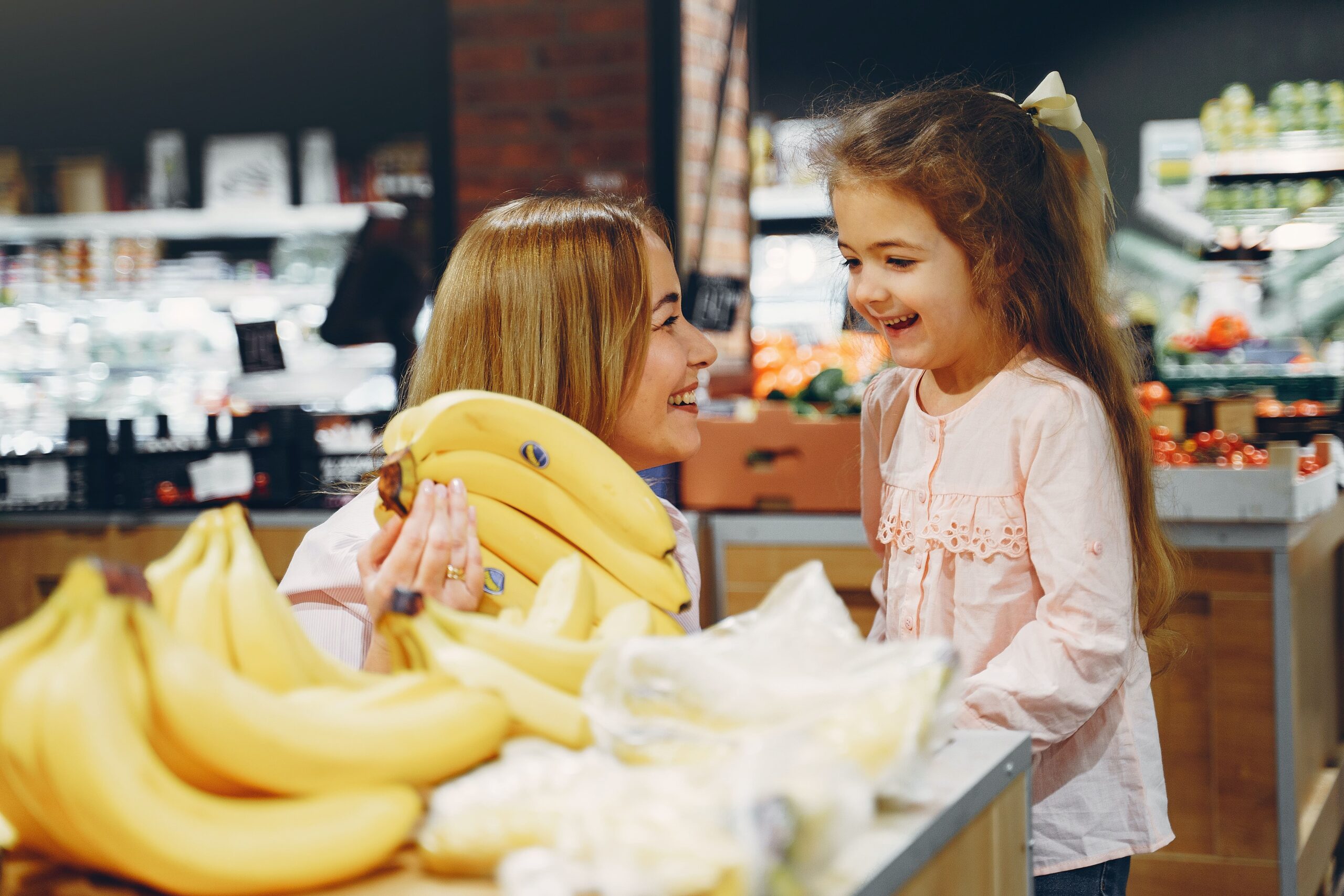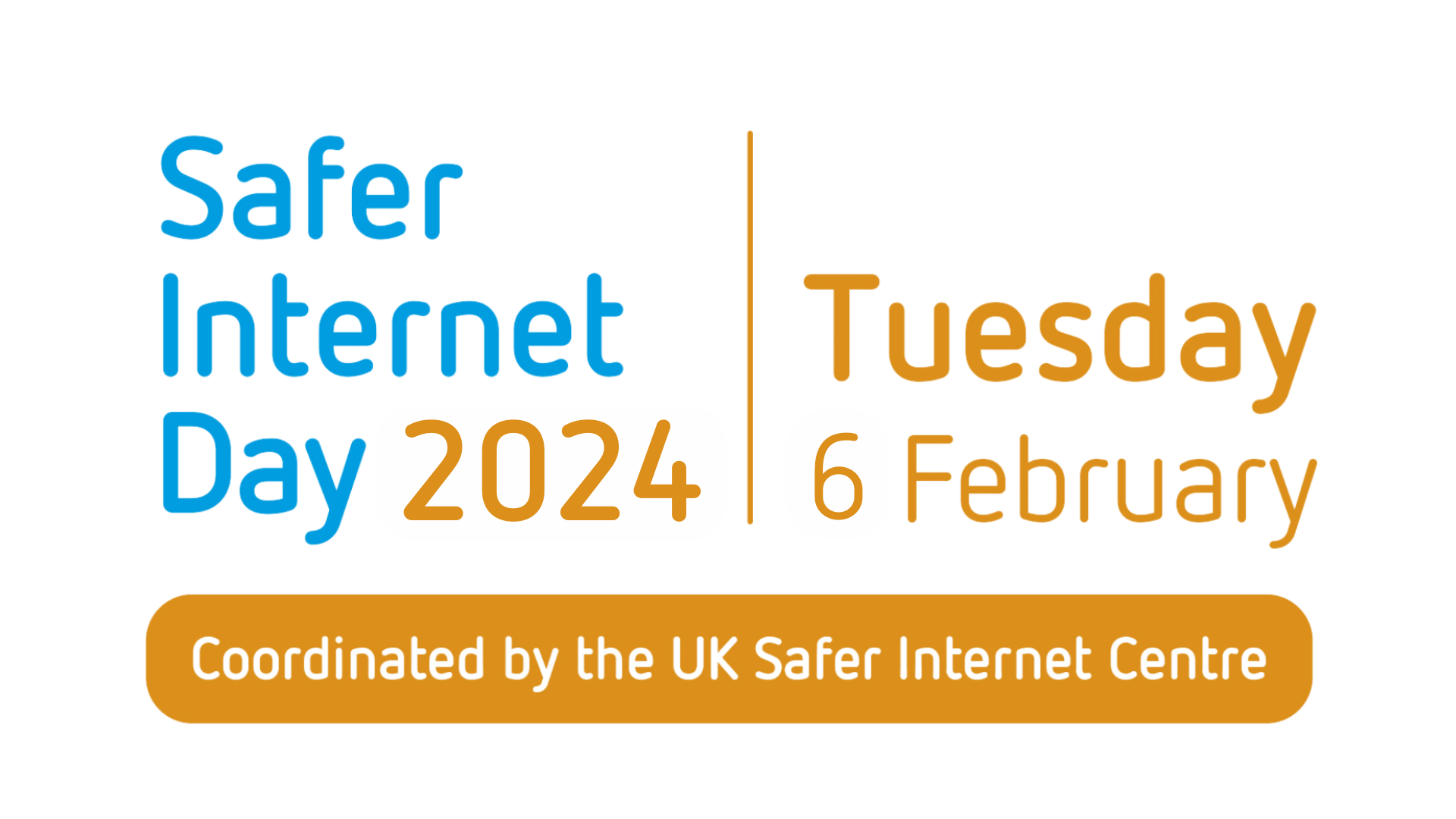Kids’ and Young Teens’ opinions are increasingly important in the household, impacting everything from grocery purchases to holiday shopping and more.
The following five stats highlight this influence:
- Young Teens (13-15) have become a distinct and influential audience, driving over $61B in annual household spending.
- 52% of parents in the United States with children who fall within the Gen Z age bracket (between the ages of 8-23) stated that their children influence the specific brands they consider when shopping.
- 84% of kids helped parents choose online groceries during coronavirus lockdowns in the United States.
- 97% of parents plan to follow their kids’ holiday wish list, with 1 in 5 parents also saying that they will buy every single item that is on the list.
- Parents are including their children in every step of the purchasing journey, with 72% of parents typically involving them right from the start.
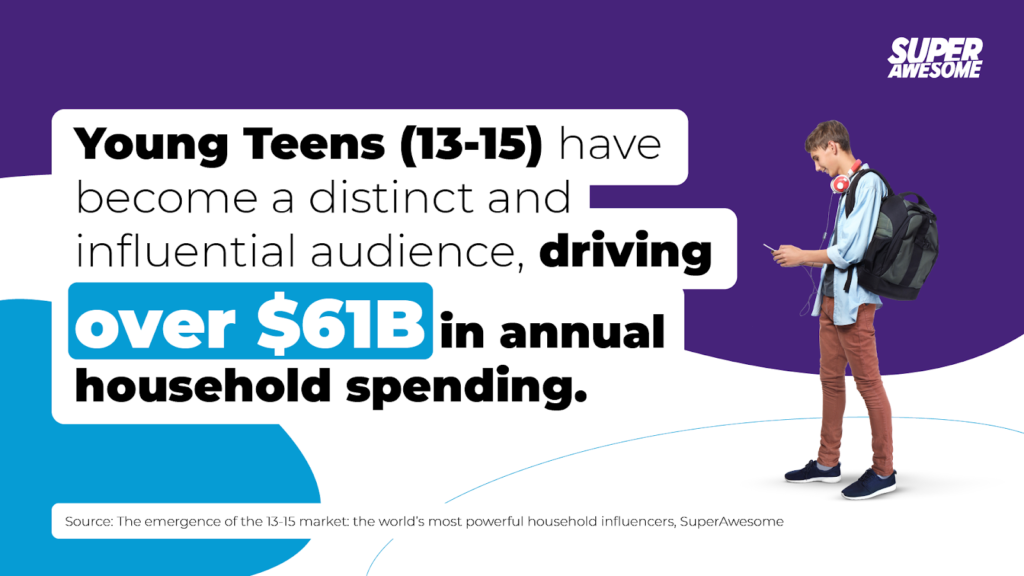
No longer kids, but not quite Young Adults, Young Teens are at the center of the family unit and at the peak of their power in household spending decisions. Driving over $61B in annual household spending, they are much more influential than their older teenage counterparts, who are more focused on making their own financial decisions. Young Teens influence a staggering 90% of household grocery purchases, 88% of household movie purchases, and 78% of video game purchases; their vertical-agnostic influence over household spending makes them a critical cohort that cannot be ignored.

Nearly nine in 10 parents say their children influence at least some aspect of their household spending decisions, either for general use items or items for the kids themselves—with over half of parents stating that their children influence the specific brands they consider when shopping. This indicates that even adult-audience brands will need to think about how to safely engage younger audiences to build brand awareness and affinity with the entire family.
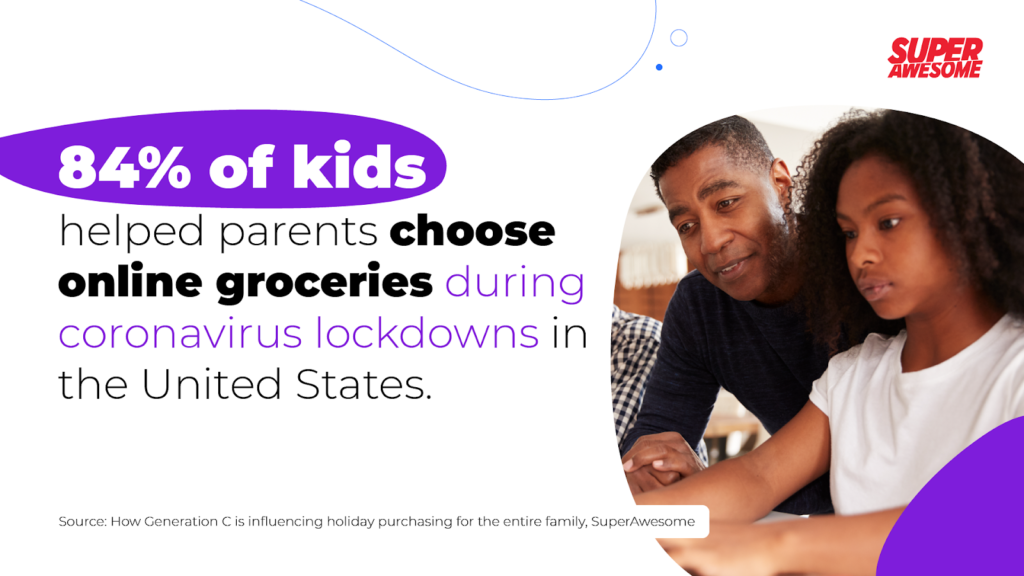
As families spend more time at home together due to Covid-19 restrictions, kids and Young Teens have an even greater influence on household spending decisions. During coronavirus lockdowns, in particular, children craved routine activities during uncertain times, so we saw them play a much more important role in everything from grocery shopping to cooking meals. As a result of this shift, food and consumer goods brands must communicate with the whole family to ensure they’ll make it into the digital shopping cart.
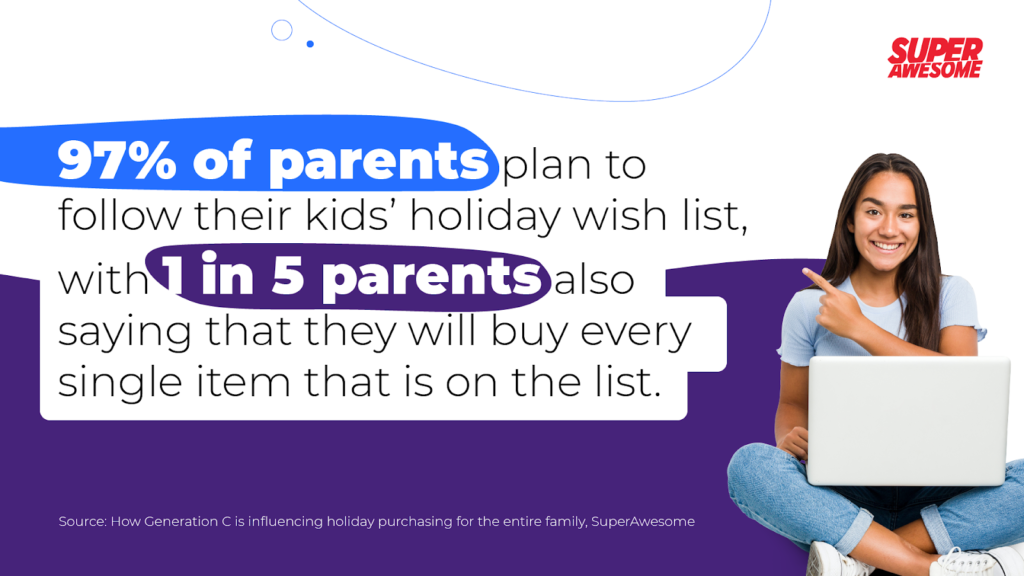
Amid an uncertain and difficult year, parents aim to make this holiday season extra special, which begins with finding the perfect gift. Accordingly, wish lists have taken a whole new meaning this year, with 71% of parents saying that it is very important to get the items on their children’s wish list. With kids and Young Teens owning the purchase funnel this holiday season and beyond, brands must make it as easy as possible for them to share links for the items they desire with their adult family members.
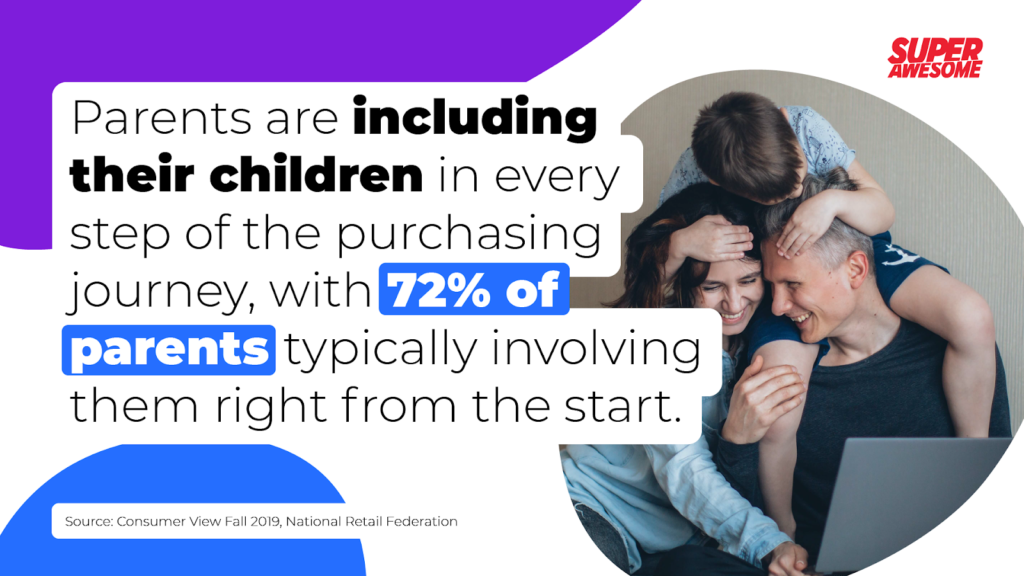
The majority of parents (85%) say it’s important for their children to be involved in household spending decisions, with 4 in 5 parents claiming they involve their children more in purchases than their own parents did with them. This is largely due to the rise of the internet and online shopping, which grants kids and Young Teens access to limitless information to shape their opinions about brands and products. The most common time to involve children is during the early stages of researching products and features.
It’s clear that kids and Young Teens play a strong role in household spending decisions, but many brands struggle to understand how to responsibly and compliantly engage these audiences. Compliance, age-appropriateness, and safety must be a top priority to ensure the safety of youth audiences and brands alike.
Our KidAware training program offers a variety of resources to help brands navigate the continuously developing compliance needs of the digital kids media ecosystem.

